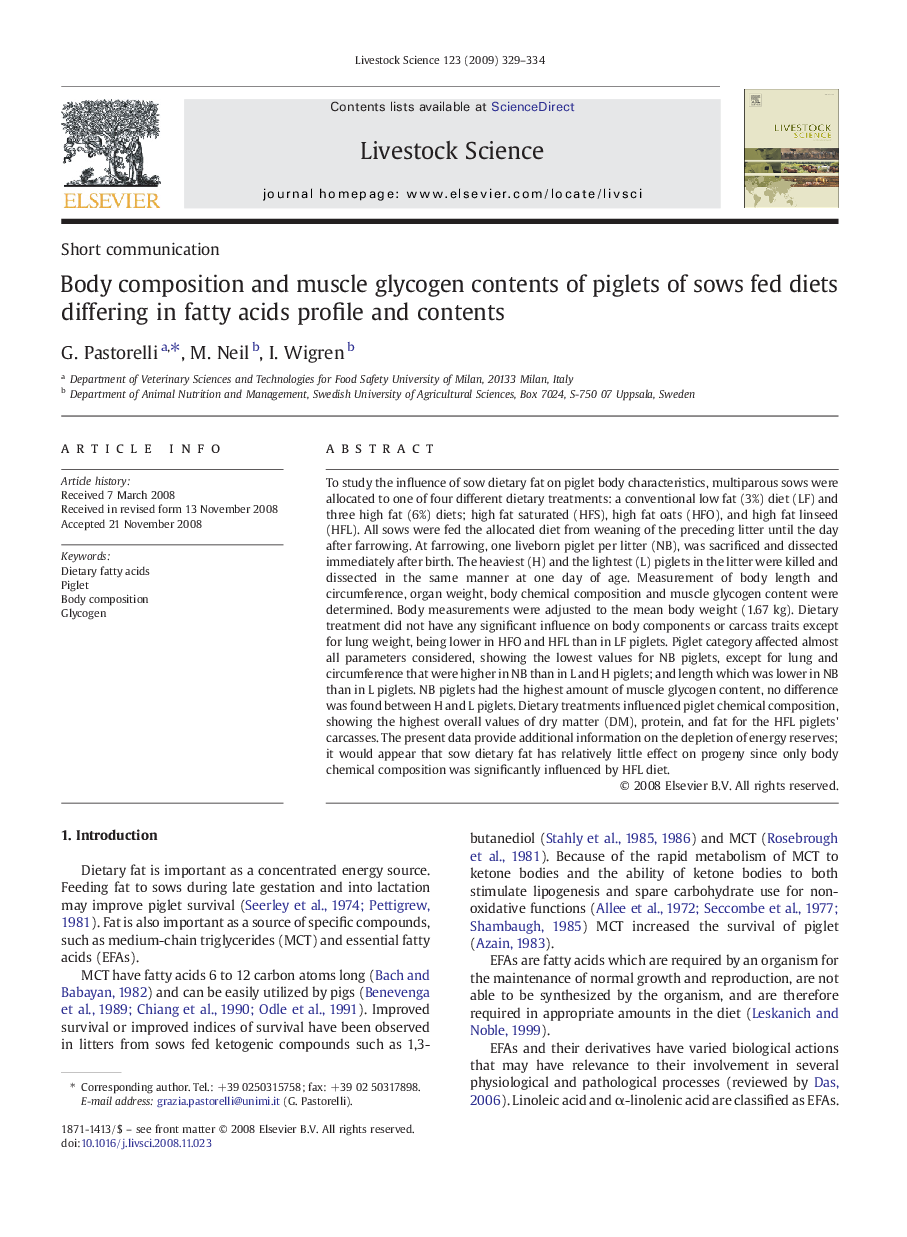| Article ID | Journal | Published Year | Pages | File Type |
|---|---|---|---|---|
| 2447990 | Livestock Science | 2009 | 6 Pages |
To study the influence of sow dietary fat on piglet body characteristics, multiparous sows were allocated to one of four different dietary treatments: a conventional low fat (3%) diet (LF) and three high fat (6%) diets; high fat saturated (HFS), high fat oats (HFO), and high fat linseed (HFL). All sows were fed the allocated diet from weaning of the preceding litter until the day after farrowing. At farrowing, one liveborn piglet per litter (NB), was sacrificed and dissected immediately after birth. The heaviest (H) and the lightest (L) piglets in the litter were killed and dissected in the same manner at one day of age. Measurement of body length and circumference, organ weight, body chemical composition and muscle glycogen content were determined. Body measurements were adjusted to the mean body weight (1.67 kg). Dietary treatment did not have any significant influence on body components or carcass traits except for lung weight, being lower in HFO and HFL than in LF piglets. Piglet category affected almost all parameters considered, showing the lowest values for NB piglets, except for lung and circumference that were higher in NB than in L and H piglets; and length which was lower in NB than in L piglets. NB piglets had the highest amount of muscle glycogen content, no difference was found between H and L piglets. Dietary treatments influenced piglet chemical composition, showing the highest overall values of dry matter (DM), protein, and fat for the HFL piglets' carcasses. The present data provide additional information on the depletion of energy reserves; it would appear that sow dietary fat has relatively little effect on progeny since only body chemical composition was significantly influenced by HFL diet.
